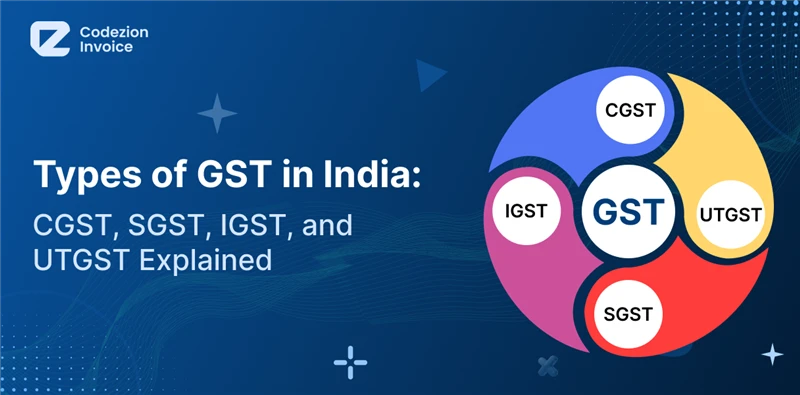
Since its rollout in 2017, GST has replaced a complex web of indirect taxes in India with a unified system. For businesses, especially SMEs and freelancers, understanding the different types of GST is crucial for compliance and efficient invoicing. In this blog, we’ll break down the types of GST in India and explain how they work in different scenarios. We will also show how Codezion Invoice’s powerful GST billing software makes GST management effortless for businesses in India.
GST (Goods and Services Tax) is a comprehensive indirect tax levied on the manufacture, sale, and consumption of goods and services across India. It replaced the older tax system with a unified tax structure, making it simpler and more transparent.
CGST is levied by the Central Government on intra-state transactions (where both the seller and buyer are in the same state). It ensures that both the central and state governments receive their respective share of taxes.
Example: A company in Maharashtra selling goods to another company in Maharashtra will apply 9% CGST and 9% SGST.
SGST is collected by the State Government on intra-state transactions (sales within the same state). The revenue collected from SGST goes to the respective state government.
Example: If a business in Gujarat sells goods within Gujarat, SGST applies.
IGST is charged on inter-state transactions or imports. It’s collected by the central government and shared with the destination state where the goods are delivered.
Example: Goods sold from Delhi to Bangalore will attract IGST.
UTGST is applicable to transactions within Union Territories (except Jammu and Kashmir, where GST is not applicable). If there is no legislature in a Union Territory, UTGST will apply along with CGST.
| Transaction Type | Tax Applied | Collected By |
|---|---|---|
| Intra-state sale | CGST + SGST | Central & State Government |
| Inter-state sale | IGST | Central Government |
| Inter-UT sale | CGST + UTGST | Central + UT Administration |
| Export | IGST (zero-rated) | Central Government |
The type of GST applied to your business transactions can impact various aspects of your operations:
Codezion Invoice automates GST calculations, ensures accurate invoicing, and generates GST-compliant invoices for your business. It handles all four types of GST, helping businesses reduce compliance errors, track payments, and streamline reporting.
Understanding the types of GST is essential for any business in India. Whether it's CGST, SGST, IGST, or UTGST, ensuring the correct tax type is applied can save businesses from penalties and legal issues. Codezion Invoice makes managing these complexities easy and efficient with smart features designed to simplify GST billing and compliance.
CGST is collected by the central government, while SGST is collected by the state government. Both taxes are applied on intra-state sales.
Codezion Invoice automatically calculates the correct GST for each transaction type, ensuring compliance and reducing errors.
It depends on whether the transaction is intra-state or inter-state. Codezion Invoice helps you automatically select the right tax type.
Yes, Codezion Invoice automatically applies IGST for inter-state sales and generates the correct invoice.
Yes, Codezion Invoice is designed to cater to freelancers, startups, and SMEs looking for simple, reliable GST billing solutions.